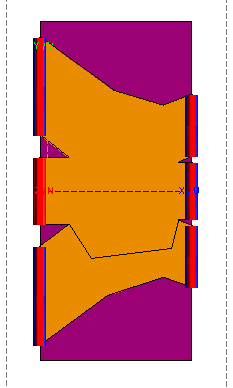Warnings during simulation of large structure using RL-G0 solver in CADFEKO
Hi, i have a very large electrical microstrip structure(lamda=5.7[mm] and dimensions of structure are 250x560[mm]) on a very thin dielectric substrate with height=0.1[mm].My structure has three ports as input and three as output.I'm using the RL-GO solver for both the microstrip region and the substrate. However when i simulate it, i'm getting the warnings: WARNING 33751: Requirements for applying the GO approximation are not met (distance to ray source too small) when the mesh is finer, and when when i make the mesh a little more coarse for les simulation time i get a warning wich says Requirements for applying the GO approximation are not met(angular pattern is too coarse). Another thing is that simulation time is pretty large and i have to run many simulations to make impedance matching networks feed lines etc..Can anyone help me to understand these warnings and how to solve them but also how could i make the simulation time less? Thank you. (Note that in the attached image the whole structure is a union but when i simplified it the edge that appears inside the structure could not be removed although there is not gap between the connected parts of the structure)
Answers
-
For microstrip you must use the MoM or FEM solver.
For MoM you could then either define a finite dielectric or solve with an planar multilayer substrate which is usually faster.
To decide which solver to use, we have free online courses available that will teach you how to do that.
It is recommended to start with the fundamental course first.
0 -
Due to the large simulation time because MoM or FEM method need large computational resources for an electrically very large structure, is there any way to reduce the simulation time?
0
